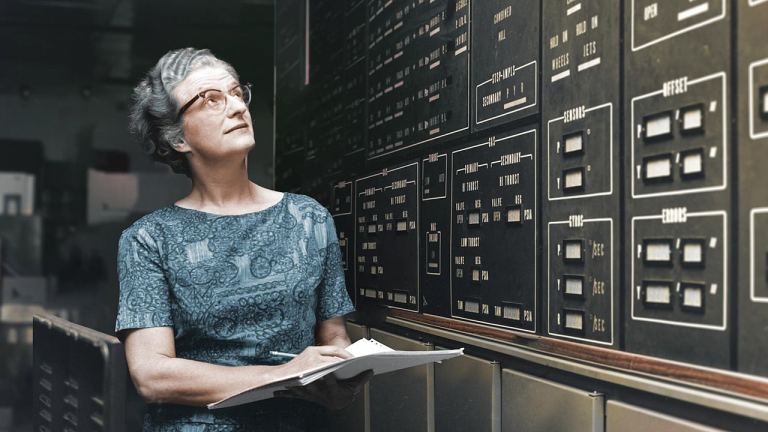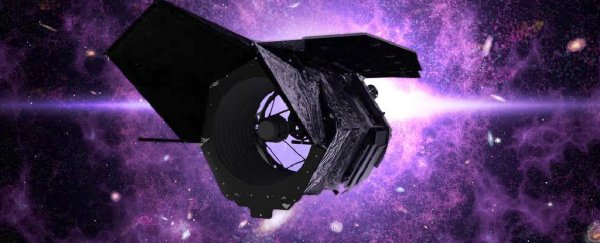The Nancy Roman Telescope has reached another milestone in its development. NASA has announced that the space telescope's primary mirror is now complete.
The 2.4 meter (7.9 foot) mirror took less time to develop than other mirrors because it wasn't built from scratch. It's a re-shaped and re-surfaced mirror that came from the National Reconnaissance Office.
The Nancy Grace Roman Space Telescope was initially named WFIRST (Wide Field Infrared Space Telescope). The telescope project was approved in February 2016, and in May 2020 NASA announced the name change.
WFIRST became the Nancy Grace Roman Space Telescope, in honor of NASA's first chief astronomer, who passed in 2018. The telescope is also sometimes called the Roman Space Telescope, or RST.
The primary mirror is the heart of a telescope. It's responsible for gathering the light that can then be directed towards different instruments. The RST's primary mirror is the same size as the Hubble's, but it's much lighter thanks to technological advances.
The RST also has a much wider field of view than Hubble, 100 times greater in fact. It'll use its power and wide field of view to examine cosmic objects near and far.
The RST is an infrared observatory, like the James Webb Space Telescope (JWST). The JWST's primary mission is to look as far back in time as possible and to see the Universe's first light. But the RST is different. Its wide field of view means it's primary concerns are studying dark energy, and exoplanets.
And with its primary mirror now complete, its one step closer to launch, scheduled for sometime in 2025.

"Achieving this milestone is very exciting," said Scott Smith, Roman telescope manager at NASA's Goddard Space Flight Center in Greenbelt, Maryland.
"Success relies on a team with each person doing their part, and it's especially true in our current challenging environment. Everyone plays a role in collecting that first image and answering inspiring questions."
Telescope mirrors are coated with different materials depending on the wavelengths of light it's designed to sense. The Hubble was designed to see in the infrared, ultraviolet, and in optical, so it's mirror was coated in layers of aluminium and magnesium fluoride.
The JWST's mirror is coated with gold since it sees in longer infrared wavelengths.
The Roman Space Telescope's mirror is coated with an extraordinarily thin layer of silver, used because of its ability to reflect infrared light. It's less than 400 nanometers thick, which is 200 times thinner than a human hair.
Like all advanced telescope mirrors, it's polished meticulously. The average bump on the mirror's surface is only 1.2 nanometers high, which NASA says is twice as smooth as mission operations require. If the mirror were the size of the Earth, the tallest bump would only be 1/4 inch tall.
Since the mirror is twice as smooth as the design called for, it should provide better science results than predicted.
"The mirror was precisely finished to the Roman Space Telescope's optical prescription," said Bonnie Patterson, program manager at L3Harris Technologies in Rochester, New York.
 Nancy Roman. (NASA/ESA)
Nancy Roman. (NASA/ESA)
"Since it's so much smoother than required, it will provide even greater scientific benefit than originally planned," Patterson said in a press release.
Once the primary mirror collects the infrared light, the light is sent to the telescope's two instruments: the Coronagraph Instrument and the Wide Field Instrument, which is the RST's primary instrument.
The Coronagraph Instrument allows the RST to study exoplanets by blocking out the light from their star. While this won't be the first telescope to use a coronagraph, (the Hubble has one, but much weaker) the RST's should allow the telescope to see planets that are 1 billion times fainter than their stars. If it works as intended.
The Wide Field Instrument (WFI) is basically a giant 300 megapixel camera. While it has the same angular resolution as the Hubble, its field of view is almost 100 times wider than Hubble's. That'll give it the power to map the distribution and structure of dark energy in the Universe. It'll also help researchers understand how the Universe has evolved over time.
"We're going to try to discover the fate of the universe," said Goddard's Jeff Kruk, the project scientist for the Nancy Grace Roman Space Telescope. "The expansion of the universe is accelerating, and one of the things the Wide Field Instrument will help us figure out is if the acceleration is increasing or slowing down," Kruk said in a press release.
The expansion rate of the Universe is one of the enduring questions in astronomy. It's difficult to pin down the rate of expansion - called the Hubble Constant - and different researchers keep coming up with different values.
In recent years, measurements of the expansion rate have varied between about 67 and 77 (km/s)/Mpc. Dark energy is the name given to the force driving expansion, and the Roman Space Telescope will probe that rate using three techniques: baryon acoustic oscillations, observations of distant supernovae, and weak gravitational lensing.
The RST will also complete a census of exoplanets, picking up on the work of the Kepler mission. It'll be able to examine distant, giant exoplanets, thanks to its coronagraph. The RST will also be able to find rogue planets, planets drifting through space without being gravitationally bound to a star.
Right now we know of only a handful of those planets, but the RST will help us find more. Some scientists think there could be up to 1 trillion of these drifters in the Milky Way. Current estimates of rogue planet numbers lack precision, but the Roman Space Telescope should provide an estimate that's 10 times more precise.
Now that it's complete, the primary mirror will undergo more testing. Of particular concern is how the mirror will respond to the temperature changes it'll experience. The mirror is constructed of speciality glass that resists expansion and contraction. Since expansion and contraction can distort the shape of the mirror, too much of it would make for distorted images.
While the mirror has been tested for temperature extremes during its development, future testing will test not only the mirror, but also its support structure.
"Roman's primary mirror is complete, yet our work isn't over," said Smith. "We're excited to see this mission through to launch and beyond, and eager to witness the wonders it will reveal."
The RST is scheduled for launch in the year 2025 from Cape Canaveral onboard a commercial launch vehicle. It will travel to the Sun-Earth LaGrangian 2 point, where it will take up a halo orbit. It has a planned mission duration of five years.
This article was originally published by Universe Today. Read the original article.
